Small white spots on tomato leaves can indicate a variety of issues that may affect the overall health and yield of tomato plants. While some white spots are harmless, others may be a sign of a serious disease or pest infestation.
Identifying the cause of white spots on tomato leaves is essential in order to take appropriate action to prevent further damage.
Common diseases that cause white spots on tomato leaves include powdery mildew, early blight, and bacterial spot. These diseases can be caused by various factors, including high humidity, poor air circulation, and improper watering.
In addition to diseases, white spots may also be caused by pests such as spider mites and aphids, or by environmental factors such as sunscald or nutrient deficiencies. By understanding the possible causes of white spots on tomato leaves, gardeners can take steps to prevent and treat these issues.
Key Takeaways
- Small white spots on tomato leaves may indicate a variety of issues, including diseases and pests.
- Identifying the cause of white spots is essential to take appropriate action to prevent further damage.
- Prevention strategies, treatment options, and proper nutrition and care can help prevent and treat white spots on tomato leaves.
Also don’t miss:
- Small White Spots on Leaves
- White Spots on Shamrock Plants Leaves
- White Spots on Rubber Plant Leaves
Identifying Small White Spots on Tomato Leaves

Small white spots on tomato leaves are a common problem that can be caused by a number of factors. These spots can appear on both the upper and lower surfaces of the leaves and can vary in size and shape. Identifying the cause of the white spots is important in order to determine the appropriate treatment.
One of the most common causes of small white spots on tomato leaves is powdery mildew. Powdery mildew is a fungal disease that thrives in warm, humid conditions.
The white spots caused by powdery mildew are typically powdery or fuzzy in appearance and can cover large areas of the leaf surface. If left untreated, powdery mildew can cause the leaves to yellow and eventually die.
Another potential cause of small white spots on tomato leaves is early blight. Early blight is a fungal disease that typically appears on the lower leaves of the plant.
The white spots caused by early blight are typically circular in shape and may have a yellow or brown halo around them. In severe cases, the leaves may turn yellow and fall off the plant.
Bacterial spot is another potential cause of small white spots on tomato leaves. Bacterial spot is a bacterial disease that thrives in warm, wet conditions. T
he white spots caused by bacterial spot are typically small and irregular in shape and may have a yellow halo around them. In severe cases, the leaves may turn yellow and fall off the plant.
In addition to these diseases, small white spots on tomato leaves can also be caused by insect damage or nutrient deficiencies.
For example, spider mites can cause white spots on tomato leaves by sucking the sap out of the plant. Nutrient deficiencies, such as a lack of calcium or magnesium, can also cause white spots on tomato leaves.
Common Diseases Causing White Spots
Tomato plants are susceptible to a variety of diseases that can cause small white spots on their leaves. These diseases can be fungal in nature and can be caused by various fungi, including powdery mildew, septoria leaf spot, and late blight.
1. Powdery Mildew
Powdery mildew is a common fungal disease that affects tomato plants. It is caused by several types of fungi and is often carried by air currents and insects such as aphids. The disease is most prevalent when the temperatures are hot and dry or hot and humid for an extended period.
The symptoms of powdery mildew include the appearance of white or grayish-white spots on the leaves of tomato plants. The spots can be circular or irregular in shape and can spread rapidly, covering the entire leaf surface. Over time, the leaves may turn yellow and eventually die.
2. Septoria Leaf Spot
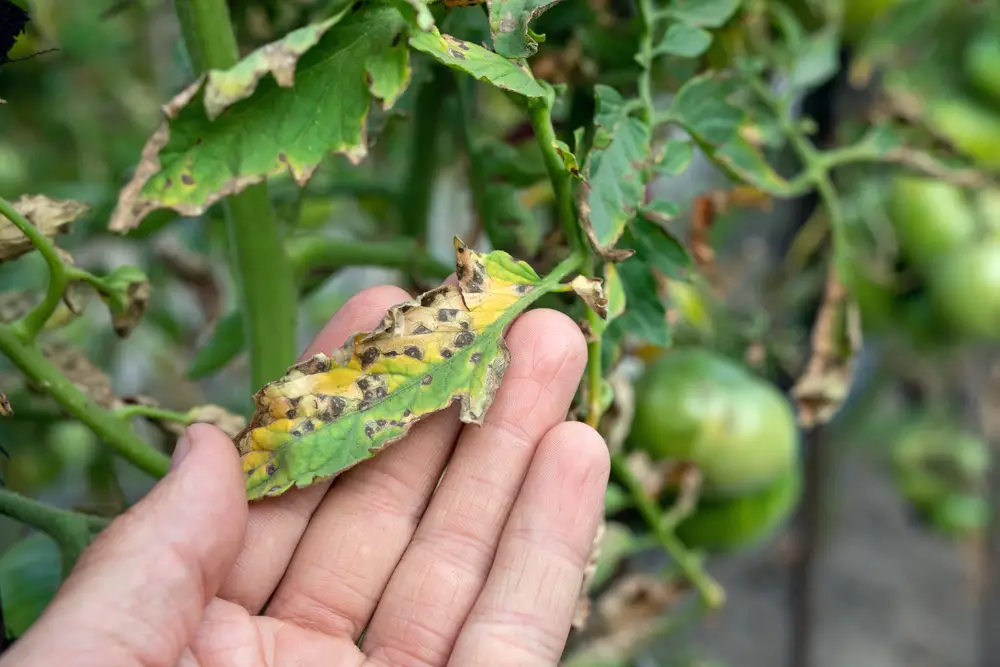
Septoria leaf spot is another fungal disease that affects tomato plants. It is caused by the fungus Septoria lycopersici and is most commonly observed during periods of high humidity and warm temperatures.
The symptoms of septoria leaf spot include the appearance of small, circular white spots on the leaves of tomato plants. The spots may have dark borders and can spread rapidly, covering the entire leaf surface. Over time, the leaves may turn yellow and eventually die.
3. Late Blight
Late blight is a fungal disease caused by the Phytophthora infestans fungus. It is a serious disease that can cause significant damage to tomato plants. The disease is most commonly observed during periods of high humidity and cool temperatures.
The symptoms of late blight include the appearance of white spots on the leaves of tomato plants. The spots may have a water-soaked appearance and can spread rapidly, covering the entire leaf surface. Over time, the leaves may turn brown and eventually die.
The Role of Climate and Environment
The climate and environment play a crucial role in the growth and health of tomato plants. The temperature and humidity levels can significantly impact the likelihood of white spots appearing on the leaves.
High humidity levels, particularly in the summer, can create the perfect breeding ground for fungi, such as powdery mildew, which is one of the most common causes of white spots on tomato leaves. When the humidity is high, the moisture in the air can settle on the leaves, creating a damp environment that encourages fungal growth.
Direct sunlight can also be a contributing factor to the appearance of white spots on tomato leaves. While tomato plants do require sunlight for photosynthesis, too much direct sunlight can cause the leaves to become scorched, which can lead to the development of white spots.
On the other hand, shade can also be problematic for tomato plants. If the plants are grown in an area with too much shade, they may not receive enough sunlight to thrive, which can weaken the plants and make them more susceptible to diseases and pests.
Unpredictable climate conditions can also have an impact on the growth and health of tomato plants. Sudden changes in temperature or humidity levels can stress the plants, making them more vulnerable to diseases and pests.
To minimize the risk of white spots on tomato leaves, it is essential to maintain a consistent environment for the plants. This includes providing adequate sunlight, avoiding high humidity levels, and protecting the plants from sudden changes in temperature or weather conditions.
Impact on Tomato Plant and Fruit
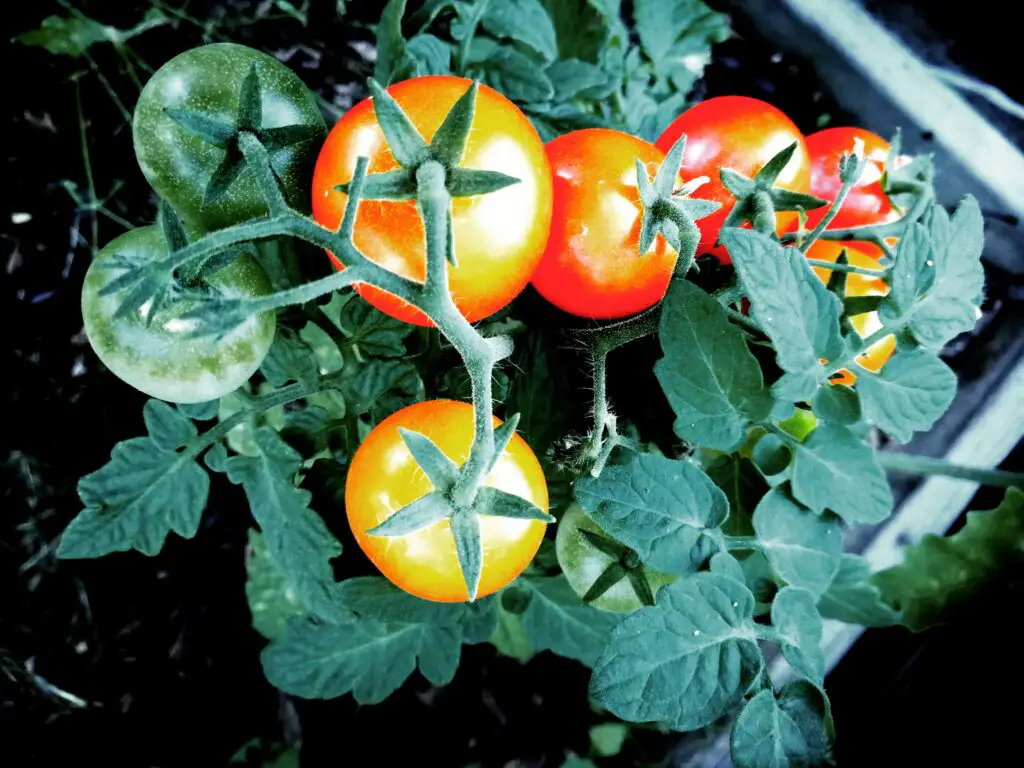
Small white spots on tomato leaves can have a significant impact on the overall health and productivity of the tomato plant. These spots are often caused by powdery mildew, a fungal disease that can quickly spread throughout the plant if left untreated.
If the powdery mildew is not controlled, it can weaken the tomato plant and reduce its ability to produce fruit. In severe cases, the plant may die. Therefore, it is essential to identify and treat powdery mildew as soon as possible.
The impact of powdery mildew on tomato fruit can also be significant. While the disease itself does not directly affect the fruit, it can reduce the plant’s yield and affect the taste and flavor of the fruit. In some cases, the fruit may also develop small white spots or powdery patches, making it unappealing for consumption.
To prevent the impact of powdery mildew on tomato plants and fruit, it is crucial to take preventative measures. This includes ensuring adequate sunlight and air circulation around the plant, avoiding overhead watering, and removing infected leaves promptly.
In addition to preventative measures, there are also treatments available to help control powdery mildew. This includes using fungicides or natural remedies such as baking soda or neem oil. However, it is essential to follow the instructions carefully and avoid using harsh chemicals that may harm the plant or the environment.
Prevention Strategies
There are several prevention strategies that can be implemented to prevent the occurrence of small white spots on tomato leaves. Proper spacing and air circulation, pruning, and the use of fungicides are some of the most effective methods.
Proper Spacing and Air Circulation
One of the primary reasons for the occurrence of white spots on tomato leaves is poor air circulation. Therefore, it is essential to provide adequate spacing between tomato plants to ensure proper air circulation. The recommended spacing for tomato plants is typically 24-36 inches apart.
Additionally, it is crucial to ensure that the plants are not overcrowded and that they receive sufficient sunlight. Proper spacing and air circulation can prevent the development and spread of fungal diseases, such as powdery mildew.
Pruning
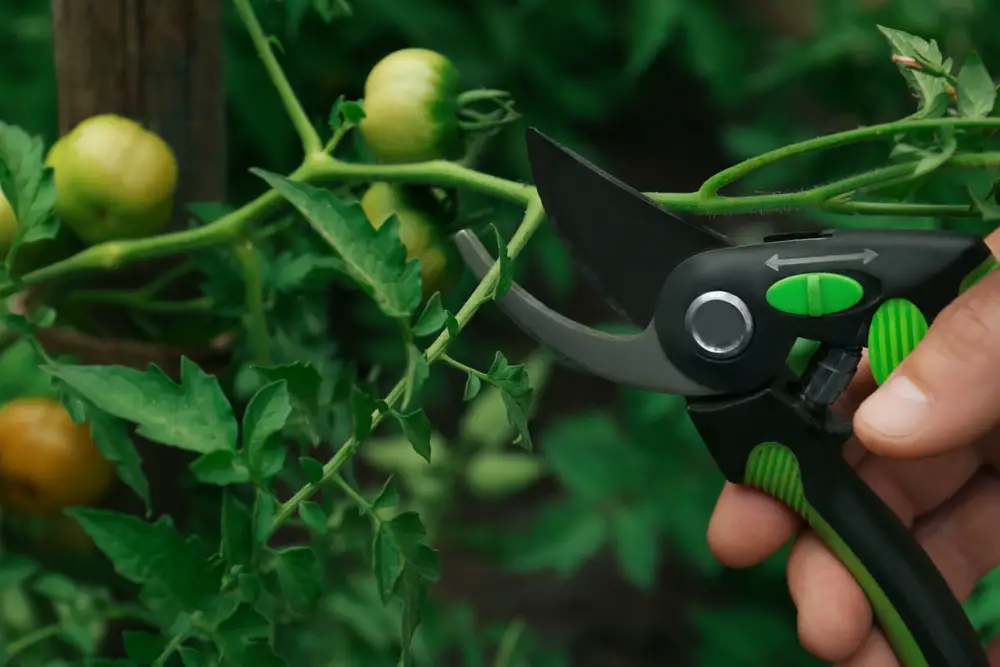
Pruning is another effective method to prevent the occurrence of white spots on tomato leaves. Pruning involves removing the infected leaves, which helps prevent the spread of fungal diseases. It is recommended to prune the infected leaves as soon as the white spots are noticed.
Pruning also promotes the growth of healthy leaves and improves air circulation, which can prevent the development of fungal diseases. It is essential to use clean and sharp pruning tools to prevent the spread of diseases.
Use of Fungicides
The use of fungicides is another effective method to prevent the occurrence of white spots on tomato leaves. Fungicides can be used to prevent powdery mildew, which is one of the primary causes of white spots on tomato leaves.
Organic fungicides, such as copper fungicides, are effective in preventing powdery mildew. It is essential to follow the instructions on the fungicide label carefully and apply the fungicide as directed.
Treatment Options
When small white spots start to appear on tomato leaves, it is important to take action to prevent further damage to the plant. There are several treatment options available that can effectively combat the issue. In this section, we will explore some of the most popular treatments for treating white spots on tomato leaves.
1. Neem Oil
Neem oil is a natural and effective treatment for white spots on tomato leaves. It is derived from the neem tree and contains a compound called azadirachtin, which has antifungal and antibacterial properties.
Neem oil can be sprayed directly onto the leaves of the tomato plant, which will help to kill any fungal spores and prevent the spread of the white spots.
To use neem oil as a treatment, mix one tablespoon of neem oil with one gallon of water. Spray the solution onto the tomato plant, making sure to cover the leaves and stems thoroughly. Repeat this process every seven to ten days until the white spots disappear.
2. Milk Spray

Milk spray is another natural treatment that can be used to combat white spots on tomato leaves. Milk contains a protein called casein, which has antifungal properties. When sprayed onto the tomato plant, the milk will coat the leaves and help to prevent the growth of fungal spores.
To use milk spray as a treatment, mix one part milk with two parts water. Spray the solution onto the tomato plant, making sure to cover the leaves and stems thoroughly. Repeat this process every seven to ten days until the white spots disappear.
3. Copper
Copper is a fungicide that can be used to treat white spots on tomato leaves. It works by killing the fungal spores and preventing them from spreading. Copper can be applied as a spray or a dust, depending on the severity of the white spots.
To use copper as a spray, mix one tablespoon of copper fungicide with one gallon of water. Spray the solution onto the tomato plant, making sure to cover the leaves and stems thoroughly. Repeat this process every seven to ten days until the white spots disappear.
To use copper as a dust, apply a thin layer of copper fungicide onto the leaves of the tomato plant using a dust applicator. Repeat this process every seven to ten days until the white spots disappear.
4. Remove Infected Leaves
Another effective treatment for white spots on tomato leaves is to remove the infected leaves. This will help to prevent the spread of the white spots to other parts of the plant. Use a pair of clean scissors or pruning shears to remove the infected leaves, making sure to dispose of them in a sealed bag or container.
Role of Proper Nutrition and Care
Proper nutrition and care are essential to keep tomato plants healthy and free from white spots on their leaves. Tomato plants require a balanced supply of nutrients to grow and produce healthy fruits. Nutrient deficiencies can cause white spots on the leaves and affect the overall health of the plant.
1. Fertilizer and Nutrients

Tomato plants require a variety of nutrients, including nitrogen, phosphorus, potassium, calcium, magnesium, and sulfur, to grow and produce healthy fruits.
A balanced fertilizer can provide these nutrients to the plant. It is important to choose a fertilizer that is formulated specifically for tomatoes and follow the manufacturer’s instructions for application.
2. Nutrient Deficiency
Nutrient deficiencies can cause white spots on tomato leaves. For example, a calcium deficiency can cause blossom end rot, which is characterized by a white, sunken spot on the bottom of the fruit. A magnesium deficiency can cause yellowing between the veins of the leaves and the formation of white spots.
3. Fertilization
Over-fertilization can also cause white spots on tomato leaves. Excessive nitrogen can cause rapid growth and weak stems, making the plant more susceptible to diseases and pests. It is important to follow the recommended fertilization schedule and not apply more fertilizer than necessary.
4. Water and Mulch
Tomato plants require consistent moisture to grow and produce healthy fruits. Inconsistent watering can cause stress and lead to the formation of white spots on the leaves. Mulching around the base of the plant can help retain moisture in the soil and prevent evaporation.
5. Transplanting and Hardening Off
Tomato plants should be transplanted into the garden after the danger of frost has passed and the soil has warmed up. Transplant shock can cause stress and lead to the formation of white spots on the leaves. Hardening off the plants before transplanting can help reduce transplant shock and improve their overall health.
Resistant Tomato Varieties

One way to prevent small white spots on tomato leaves is to plant resistant tomato varieties. These varieties have been bred to resist certain diseases and pests that can affect tomato plants. By planting resistant varieties, gardeners can reduce the likelihood of disease and pest problems and enjoy a healthier crop.
There are many different resistant tomato varieties available, each with its own set of strengths and weaknesses. Some varieties are resistant to multiple diseases, while others are resistant to specific diseases or pests. Gardeners should choose the varieties that are best suited to their particular growing conditions and needs.
Here are some examples of resistant tomato varieties:
- Cherry Bomb F1: Resistant to late blight
- Chocolate Sprinkles: Resistant to fusarium wilt, root knot nematode, tomato mosaic virus, and tobacco mosaic virus
- Citrine F1: Resistant to fusarium wilt 1 and 2
- Clementine F1: Resistant to fusarium wilt 2
- Early Cherry: Resistant to fusarium wilt 1 and verticillium wilt
It’s important to note that resistant varieties are not immune to disease and pests. They may still become infected, but they are less likely to be severely affected and may recover more quickly. Gardeners should still practice good cultural practices, such as avoiding overhead watering and providing adequate spacing between plants, to further reduce the risk of disease and pest problems.
Pests That Can Cause White Spots
White spots on tomato leaves can also be caused by pests. Here are some of the common pests that can cause white spots on tomato leaves:
1. Aphids
Aphids are tiny insects that suck the sap from tomato leaves, causing them to curl and turn yellow. They also leave behind a sticky substance called honeydew, which can attract other pests like ants.
Aphids are usually found on the undersides of leaves and can be identified by their pear-shaped bodies and long antennae. They can be controlled by spraying the tomato plant with a strong stream of water or by using insecticidal soap.
2. Mealybugs
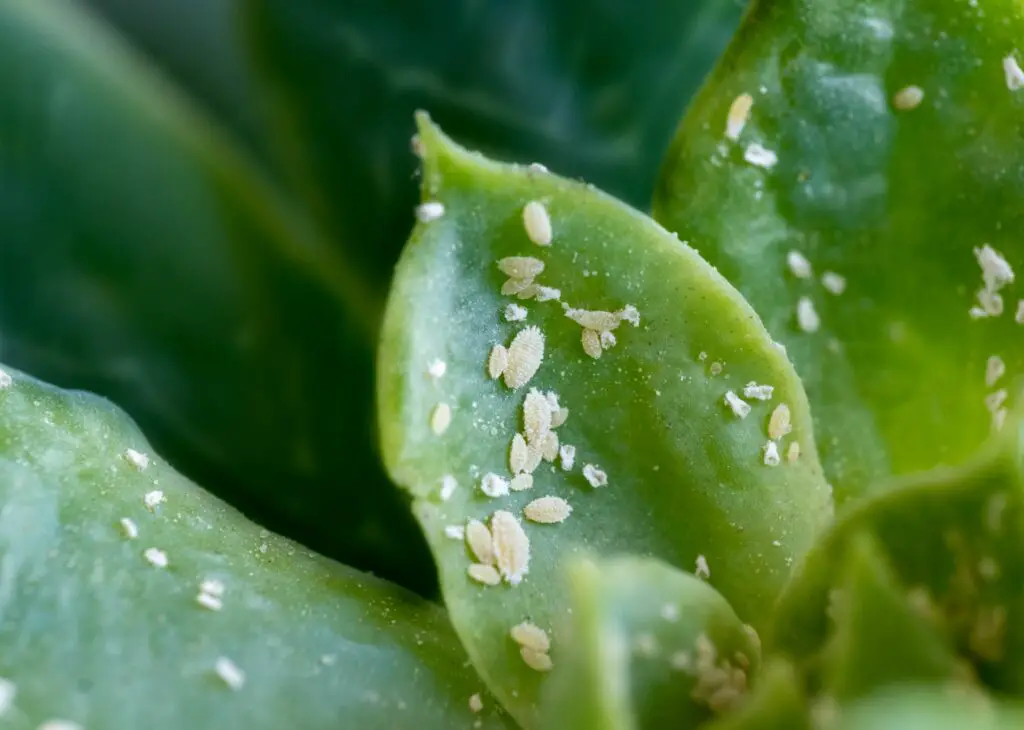
Mealybugs are small, white, cottony insects that feed on the sap of tomato plants. They can be found on the leaves, stems, and fruit of the plant and can cause stunted growth, yellowing, and wilting. Mealybugs can be controlled by removing them with a cotton swab dipped in rubbing alcohol or by using insecticidal soap.
3. Whiteflies
Whiteflies are small, white, moth-like insects that feed on the sap of tomato plants. They can be found on the undersides of leaves and can cause yellowing, wilting, and stunted growth. Whiteflies can be controlled by spraying the tomato plant with a strong stream of water or by using insecticidal soap.
4. Pests
Other pests like spider mites, thrips, and leafhoppers can also cause white spots on tomato leaves. Spider mites are tiny, red, spider-like insects that feed on the sap of tomato plants.
Thrips are small, slender insects that feed on the leaves and flowers of tomato plants. Leafhoppers are small, wedge-shaped insects that feed on the sap of tomato plants. These pests can be controlled by using insecticidal soap or by introducing beneficial insects like ladybugs or lacewings to the garden.
Other Potential Causes
Aside from powdery mildew, there are other potential causes of small white spots on tomato leaves. Here are a few:
1. Sun Scalding
Tomato leaves can develop small white spots due to sun scalding. This occurs when the leaves are exposed to too much direct sunlight, causing the cells to die and turn white. This can be prevented by providing shade for the plants during the hottest parts of the day.
2. Root Rot
Root rot is a fungal disease that can cause small white spots on tomato leaves. It occurs when the roots of the plant are exposed to too much water, causing them to rot. This can be prevented by ensuring proper drainage and not over-watering the plants.
3. Overcrowding
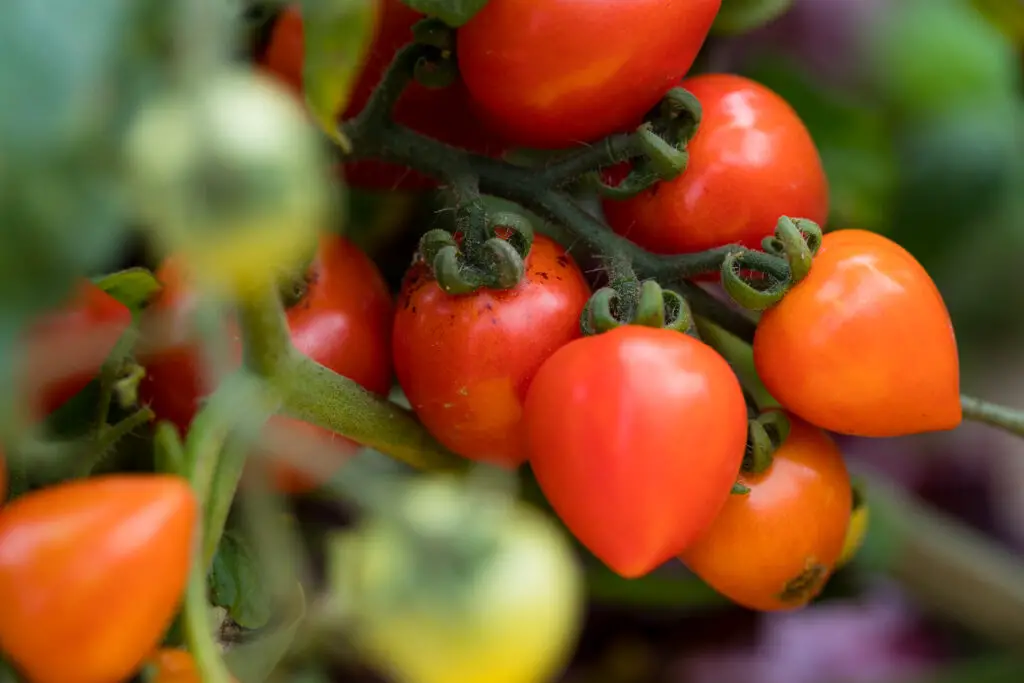
Tomato plants that are overcrowded can also develop small white spots on their leaves. This is because the plants are competing for resources, such as water and nutrients, and may not be getting enough of them. To prevent this, tomato plants should be spaced out properly when planted.
4. Stagnant Water
Stagnant water can also cause small white spots on tomato leaves. This occurs when water is allowed to sit on the leaves for too long, causing them to develop white spots. To prevent this, tomato plants should be watered at the base, and not from above.
5. Lighting
Tomato plants need plenty of light to grow and thrive, but too much light can cause small white spots on their leaves. This occurs when the leaves are exposed to too much direct sunlight, causing them to burn and turn white.
To prevent this, tomato plants should be provided with the right amount of light, and not be placed in direct sunlight for too long.
6. Poor Air Circulation
Poor air circulation can also cause small white spots on tomato leaves. This is because the leaves are not getting enough fresh air, which can lead to the growth of fungi and other diseases.
To prevent this, tomato plants should be placed in an area with good air circulation, or a fan can be used to circulate the air around the plants.
Conclusion
Small white spots on tomato leaves can indicate a variety of problems. Powdery mildew is a common cause, which is a fungal disease that thrives in warm, humid conditions. Other causes of white spots on tomato leaves include sunburn, nutrient deficiencies, and transplant shock.
To treat powdery mildew, it is important to remove infected leaves and keep the plant dry. Fungicides can also be used to prevent the spread of the disease.
Sunburn can be prevented by providing shade for the plant during the hottest parts of the day. Nutrient deficiencies can be addressed by providing the plant with the necessary nutrients, such as nitrogen, phosphorus, and potassium.
Transplant shock can be prevented by gradually acclimating the plant to its new environment. It is also important to provide the plant with adequate water and nutrients during the transplant process.
Frequently Asked Questions
What causes white spots to appear on tomato leaves?
White spots on tomato leaves can be caused by several factors, including powdery mildew, a fungal disease that thrives in warm and humid conditions. Other causes include a sudden change in environmental conditions during transplant, nutrient deficiencies, and insect infestations.
How can I prevent white spots from forming on my tomato plants?
Preventing white spots on tomato leaves involves maintaining proper growing conditions, such as ensuring adequate air circulation, avoiding over-watering, and providing sufficient nutrients to the plant. Regularly inspecting the plant for signs of pests or diseases can also help prevent the formation of white spots.
Are white spots on tomato leaves harmful to the plant?
While white spots on tomato leaves may not necessarily harm the plant, they can indicate an underlying issue that could eventually harm the plant’s overall health and productivity. For example, powdery mildew can cause leaves to yellow and drop prematurely, leading to reduced yields.
What is the best way to treat white spots on tomato leaves?
The best way to treat white spots on tomato leaves depends on the underlying cause. For powdery mildew, a fungicide may be necessary. For nutrient deficiencies, adjusting the soil pH or providing a targeted fertilizer can help. Insect infestations may require the use of insecticides.
Can white spots on tomato leaves be a sign of a disease?
Yes, white spots on tomato leaves can be a sign of a disease, such as powdery mildew, which is caused by a fungal pathogen. Other diseases that can cause white spots on tomato leaves include bacterial spot and leaf spot diseases.
Are there any natural remedies for getting rid of white spots on tomato leaves?
Yes, there are several natural remedies for getting rid of white spots on tomato leaves, such as spraying the plant with a solution of baking soda and water, or using neem oil, a natural insecticide and fungicide.
Additionally, maintaining proper growing conditions, such as adequate air circulation and proper watering, can help prevent the formation of white spots in the first place.


